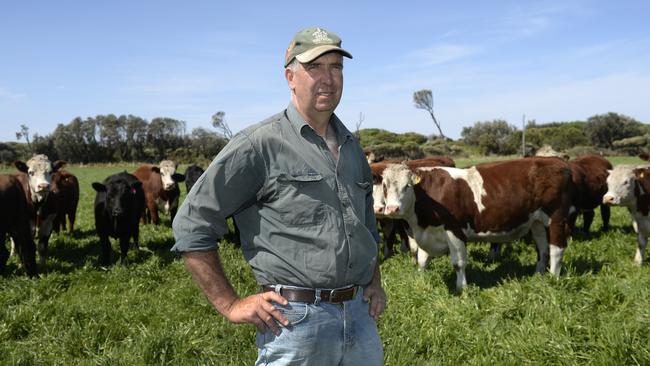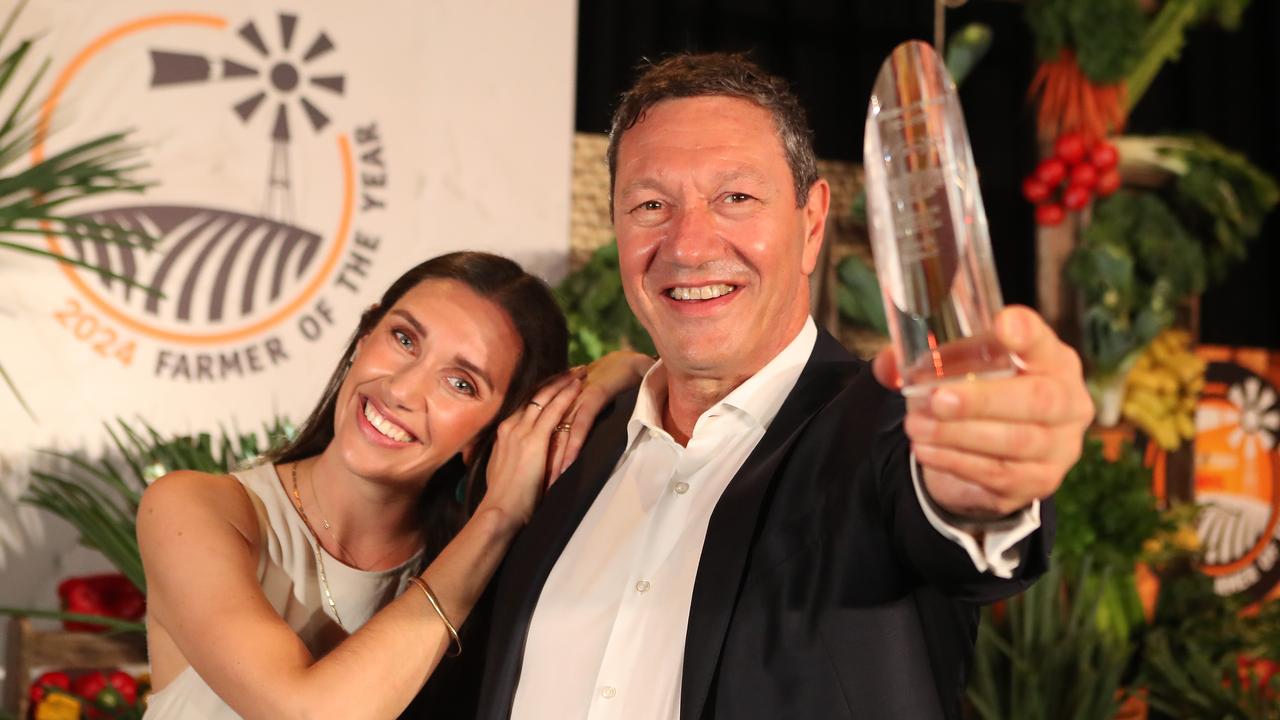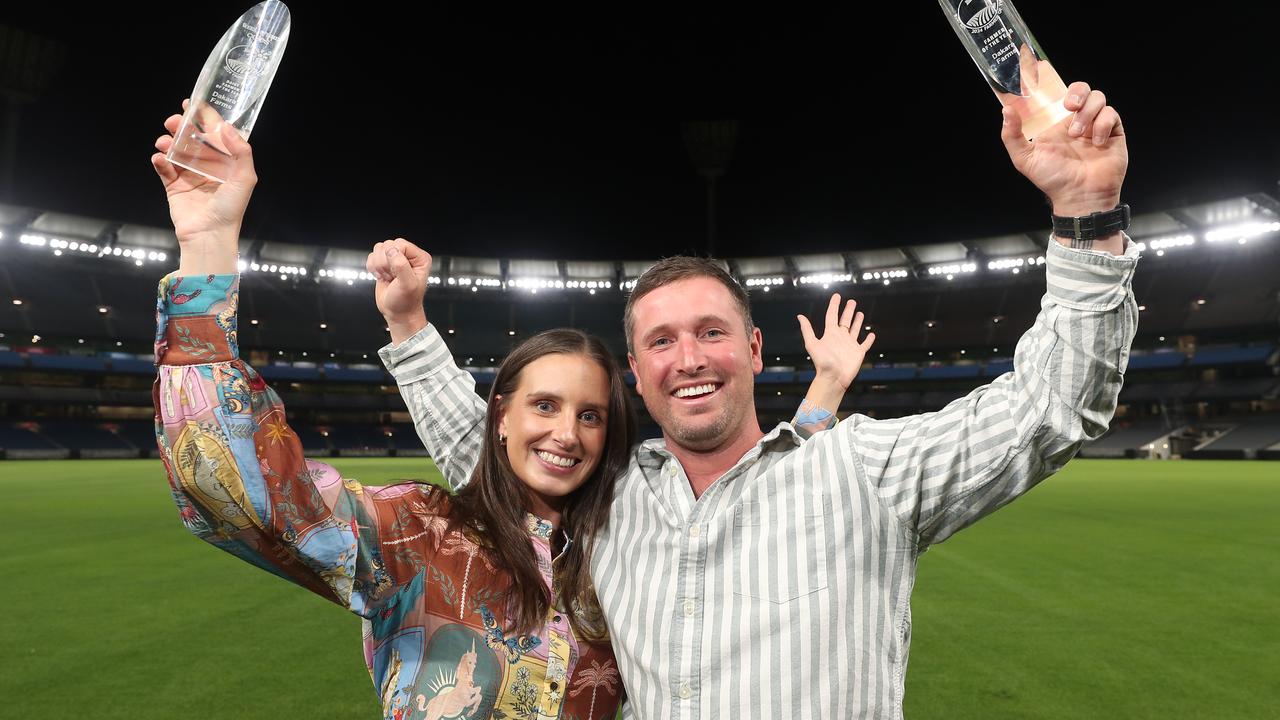Good year for beef producers Brad and Irene Gale of Waratah Bay in South Gippsland
IT HAS been a memorable year in farming for Brad and Irene Gale — for all the right reasons.

IT has been a memorable year in farming for Brad and Irene Gale — for all the right reasons.
Like most beef producers, the South Gippsland couple had been struggling but their luck took a change for the better when market prices for beef skyrocketed.
“On the product we are supplying, we are $700 a head higher than we were last year, which is a 50 per cent increase,” Brad said.
“Things were definitely a bit tight, with farm improvements going on the back burner for a couple of years.”
The unprecedented price hikes were capped for the Gales by winning the coveted JBS Australian Beef Producer of the Year Award presented at a gala dinner at Melbourne’s Crown casino in May.
“We were chuffed. We were blown away actually, because there were 1200 suppliers,” Brad said.
FAMILY AFFAIR
THE Gales operate a family partnership with Brad’s father, Philip, on 800ha at Waratah Bay.
They run a self-replacing breeding herd of 550 cows and calves and the progeny are all grown out from 20 months to two years old. They also buy another 350 steers and heifers a year to fatten.
There is a mix of calving times with 350 cows spring calving and 200 autumn calving to provide a steady flow of cattle to fatten through the year and to reduce the number of bulls needed.
For the past two years they have supplied to JBS Great Southern Beef, which is a 100 per cent grass-fed product that has had no antibiotics or HGPs and is independently audited to ensure suppliers meet strict criteria.
It is an Meat Standards Australia premium product so there are targets suppliers have to meet to ensure the cattle grade well.
“They are sold through a grid system where we have a target that they want us to meet and we want to meet it so we don’t get penalised,” Brad said.
“Dark cutters are penalised so meat colour is important and you’ve got to have that 5mm of fat cover. You also need to have them fattened at a young age before they cut too many teeth.”
MILK IT
THE cattle are sold through an agent direct to abattoirs each month and turned off as milk-tooth steers about 600kg liveweight, or between 320 to 350kg dressed weight.
Brad said they tried to ensure calves were well fed and always gaining weight.
“If they are on a holding plane, waiting for market, that’s where you can get into trouble because they are not getting enough nutrition,” he said.
“We also try to keep everything cool, calm and quiet — we walk them in quietly and any stock work we undertake is carried out using low stress techniques.”
Pastures consist of perennial ryegrass and clover, and there are also areas of reclaimed swamp which stays green throughout the summer.
Brad said they run at a low stocking rate of about 20 dry sheep equivalents through winter and increase it to 35 DSE in spring.
“I like to be able to feed my cattle and I do battle with running cattle really hard through winter, especially here because it’s very wet,” he said.
“We run at a low stocking rate which protects the cattle and pastures but whether it’s the most profitable way to run a business or not is always a debatable issue, but it’s how we choose to run the farm.”
TAKE IT AS RED
THE Gales have a mostly red composite herd and buy bulls from the Hicks Beef stud at Holbrook in NSW.
“It is hard to come across the red bulls that we are looking for,” Brad said.
“Most people go black because the feedlots pay a premium for black but we have stuck with the red as it doesn’t make any difference for what we are doing.”
They have had composites for about 12 years now and are happy with the high muscle yield, temperament and mothering ability.
Brad said they bought three to four bulls a year and looked for birthweight and gestation lengths when buying to ensure there were no calving problems.
“They have to be good on feet and structure, shape and growth because we want as much growth out of an animal as possible so it will yield well,” he said.
Brad said they didn’t have to make many changes to their enterprise before supplying JBS.
“What we are producing is what we’ve been producing for the last 10 years — we were just selling it at other places,” he said.
They sold 700 head to JBS last year and were rewarded.
“In terms of price they are consistently 10 to 20 cents in front of the market,” Brad said.
They are hoping the strong market prices are here to stay so they can carry out further farm improvements. “We will try to do more pasture renovation which will enable us to grow more grass and produce more beef.”


